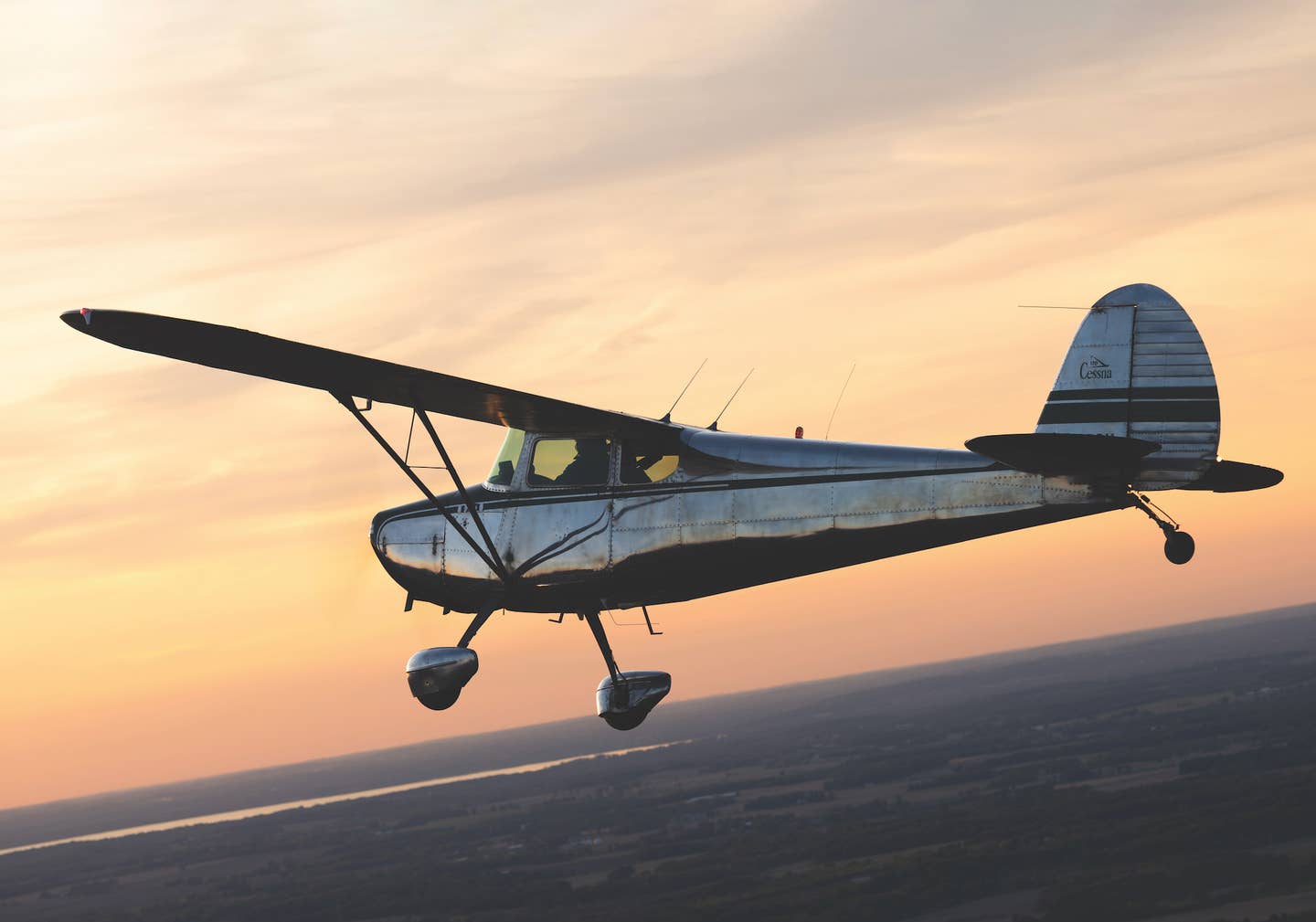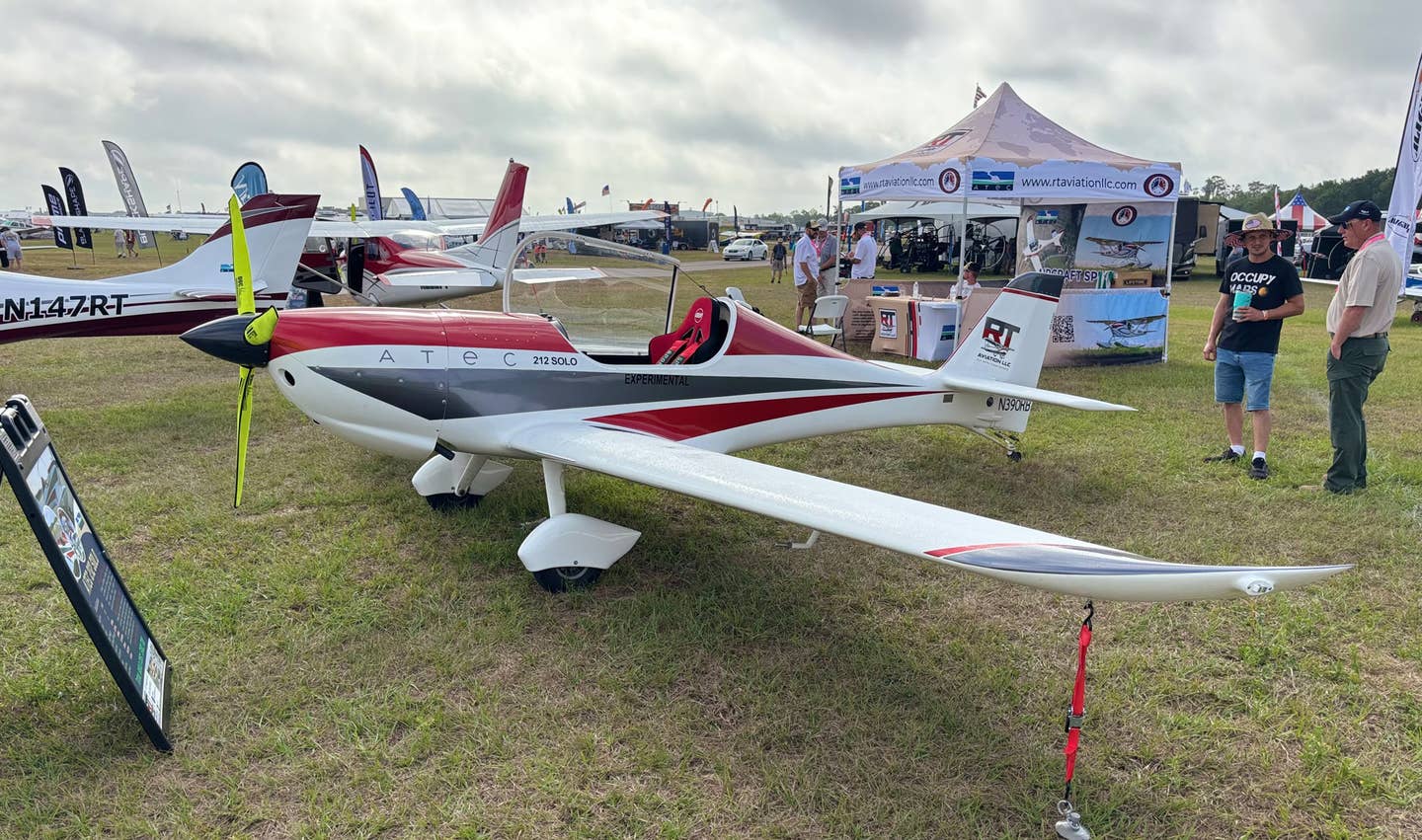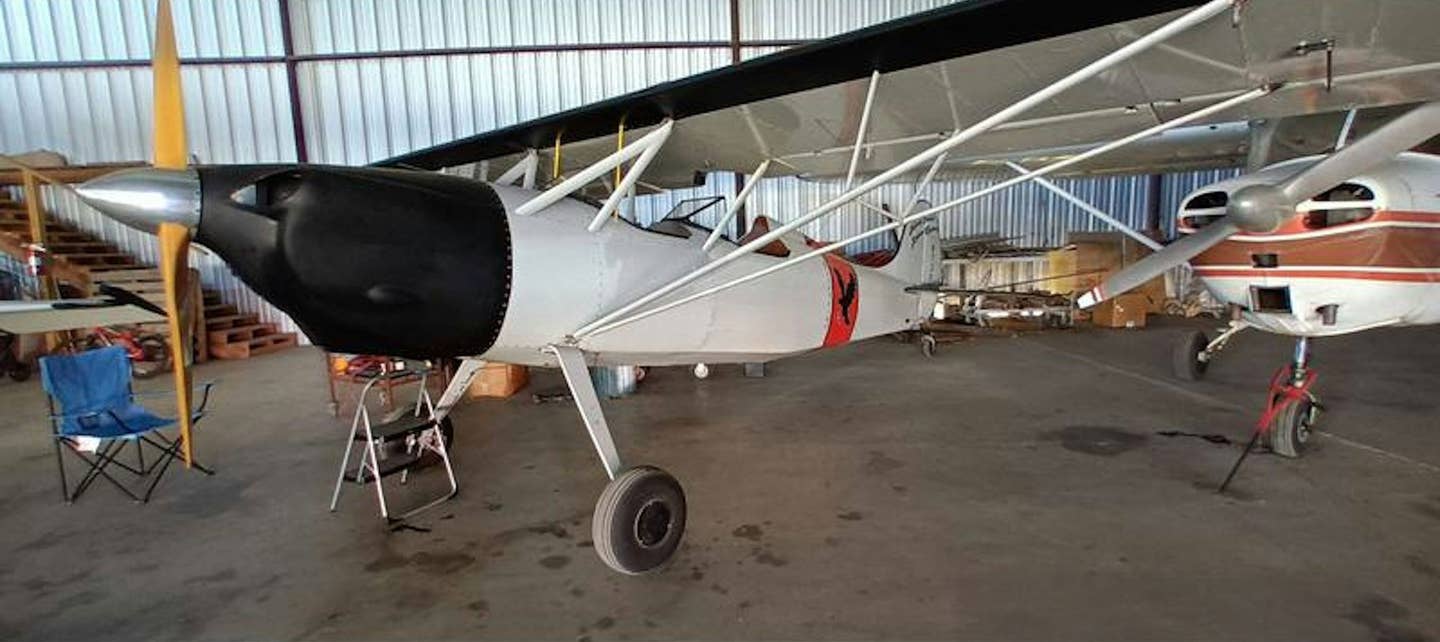Cessna’s Magnificent Model 170 Turns 75
The origins of the Cessna 170 can be traced to a need to convert from military production to civilian airplanes as World War II wound down. Cessna’s then-president, Dwane Wallace,…

The Cessna 170 is an icon of American aviation. [Photo: Leonardo Correa Luna]
The origins of the Cessna 170 can be traced to a need to convert from military production to civilian airplanes as World War II wound down. Cessna’s then-president, Dwane Wallace, knew the market needed affordable modern designs, not warmed-over, prewar models, with aluminum the preferred medium of construction. In March 1946, Cessna brought forth the model 140 two-seater. Roomier than a Luscombe, more up-to-date than a Piper Cub or Aeronca Champ. It was an instant hit.
Obviously, once they learned to fly in the 140, new pilots would be looking for a four-seat family airplane. The hulking, radial-engine Cessna 190/195, certified in 1947, was fine for the business-owner pilot and charter operator, but a more entry-level aircraft for personal flying was required. Accordingly, Cessna rushed an expanded 140 into production that was certificated on June 1, 1948, as the model 170.
Now referred to as the “straight 170,” it was a simple, scaled-up version of its predecessor, even retaining the 140’s fabric-covered, V-strutted wings. To feed the 145 hp 6-cylinder Continental, an extra fuel tank was slipped into the right wing and plumbed into its neighboring tank, giving 33.5 usable gallons. The 170 was received well enough, with 714 delivered in the last half of 1948. It offered good short-field performance and gentle, predictable handling, but it was obviously a placeholder needing improvements.
On December 15, 1948, Cessna gained CAA approval for the 170A, featuring the now-familiar, all-metal, single-strut, semi-tapered wing. It actually proved to be a bit slower and heavier than its forerunner. The triple-tank setup gave way to twin tanks but retained the small, plain flaps of the straight 170, with extra travel and area. The rounded vertical fin gained a dorsal addition, similar to the 195. A little more than 1,500 170As were built during 1949, 1950, and 1951. Although the improved 170B was originally approved on September 28, 1950, it was only introduced to the market as a 1952 model, probably because Cessna was busy developing the Model 305, known as the L-19A.
The 170B was the definitive Cessna light four-seater Wallace had always wanted. He already had his staff working on the Model 180, which used the 170B’s wing shape and L-19A’s engine with a constant-speed propeller to understudy the dated and expensive-to-build model 195. The more economical 170B cruised in stable aplomb with 1 degree,
44 minutes of wing dihedral, compared to the wandering ways of the 170A that had no uptilt. The L-19’s “barn door” flaps, extendable to 40 degrees, gave excellent control over glide path. Throughout 60-plus years of production, Cessna has relied
on the basic wing layout of the 170B for its four-seat airplanes, notwithstanding dalliances with the Cardinal 177.
For the first half of the 1950s, the Cessna 170 reigned supreme as a family airplane. It offered two yard-wide doors, a baggage compartment behind the fold-down rear seat, all-aluminum construction, and a great view of the world passing by at 110 to 120 mph. But Piper’s Tri-Pacer was chipping away at its market. Wallace could see the future, and it lay in tricycle landing gear. The 170B was quickly reworked into the tri-gear 172 for 1956, which was eagerly accepted by the public. The sporty look of the 170B was appealing, but practical and forgiving ground handling won out after 5,136 various 170s were built. The 108 Cessna 170Bs produced for 1956 were the end of the line.
So Why Is a 170 Appealing?
The 170 is one of those “shoulda bought all of ’em when we had the chance” airplanes. Ignored for years in the rush to embrace the latest and greatest “Wichita Wonder,” it has now taken on the status of cult icon. No longer a cheap back-row find, a Cessna 170, in any of its three variations, has turned into a valuable classic.
The 170B, built from 1952 to 1956, represented the transition from post-World War II light airplane design to modern general aviation. The elegant curve of the empennage was borrowed from the 195, and the tailwheel-type landing gear, called “conventional” in the 170’s heyday, was simply typical of the airplane population when it was introduced.
Yet, many of the 170B’s features were forward looking—metal, stressed-skin structure, large doors, effective flaps, and a roomy panel fitted with gyros and radios. The little airplane bequeathed its legacy to a whole line of Cessnas that followed it. It may be that when today’s vintage airplane aficionado invests in a 170B, they are seeking the cachet of an antique without the inconvenience of fabric covering, a hand-cranked engine, or limited ground visibility. The Cessna 170B is a modern airplane that happens to sit with its tail on the ground.
Walkaround Tour
Starting at the nose, the 170’s spinner is head high, the cowling inlets set off by integral cross braces. Swing-up cowlings were used in the pre-1955 170s for easy oil and battery checking. The 1955 version had fixed cowls with pop-open access doors on each side—the ’56 had only a single door. Dual exhaust pipes are used, and improved cabin heat distribution was introduced in 1953. The engine is mounted low in relation to the cabin, giving excellent visibility over the nose when taxiing and during flight.
The first 170s were powered by a Continental C-145, redesignated the O-300A in 1954. With 145 hp, it’s a smooth-running, little 6-cylinder engine that’s a fine match for the 170’s 2,200-pound gross weight. With no provisions for a vacuum pump, the 170 requires external venturi horns to power gyro instruments unless retrofitted with an O-300C or D engine to gain engine-driven suction.
The fuel system is elegantly simple—two wing tanks provide 37 usable gallons, gravity assures continuous fuel pressure, and the selector gives the option of left, right, or “both on.” Direct-reading gauges are located in the wing roots. Icing conditions should be avoided because the fuel vent pipe protrudes from the top skin of the cabin.
The wing’s tapered outboard sections improve lift distribution, with washout at the tip. An electric stall warner was standard from the 1949 170A onward. A heated pitot tube was not commonly installed. The 170B’s massive flaps are extended manually via a hefty bar between the front seats, latching into 10-, 20-, 30-, and 40-degree positions—1952 and ’53 airplanes did not have the 10-degree notch. A placard warns against executing slips with flaps extended, supposedly because of pitch oscillations.
The main gear struts are the flat Wittman spring steel gear legs, mounted far forward to lessen the possibility of a nose-over. Most 170s have been converted to Cleveland-type disc brakes in place of the original Goodyear system. Standard
6.00 x 6 tires are more than adequate for most purposes; a Scott 3200 tailwheel with an 8.00 x 4 tire cushions the aft fuselage. Unless modified, no external baggage door will be found, as luggage must be hoisted aboard over the rear seat.
Cessna 170B
- Price, new 1955-1956: $8,295
- Price, 2023 used, unmodified: $60,000-$110,000
- Wingspan: 36 ft.
- Wing area: 175 sq. ft.
- Length: 24.96 ft.
- Height: 6.63 ft.
- Maximum gross weight: 2,200 lbs.
- Empty weight, standard: 1,205 lbs.
- Empty weight, average: 1,324 lbs.
- Useful load, standard: 995 lbs.
- Useful load, average: 876 lbs.
- Baggage capacity: 120 lbs.
- Fuel capacity, total: 42 gal.
- Fuel capacity, usable: 37 gal.
- Seats: 4
- Wing loading: 12.6 lbs./sq. ft.
- Power loading: 15.2 lbs./hp
- Engine: Continental O-300A 6-cylinder, opposed, normally aspirated,
direct drive, carbureted, 145 hp at 2,700 rpm, recommended TBO 1,800 hours - Propeller: McCauley two-blade, fixed-pitch, 76-inch diameter
- Maximum speed: 136 mph
- Cruise speed, 75%: 131 mph
- Range, 75%, no reserve: 507 sm
- Cruise speed, 65%: 125 mph
- Range, 65%, no reserve: 566 sm
- Maximum range, no reserve: 692 sm
- Rate of climb, sea level: 690 fpm
- Service ceiling: 15,500 ft.
- Stall speed, flaps up: 58 mph
- Stall speed, flaps down: 52 mph
- Takeoff ground roll: 618 ft.
- Takeoff over 50 ft.: 1,625 ft.
- Landing ground roll: 458 ft.
- Landing over 50 ft.: 1,145 ft.
Climbing Aboard
Mounting up requires a determined effort, using steps below the cabin doors and assist straps on the doorposts. The front seats are boarded first, so they can be slid uphill to provide room for the back-seaters to get in. Wise Cessna tailwheel pilots rock the seat vigorously to make sure it is securely latched into a notch. There’s plenty of room for four average-size persons, which is all one should ask of the 170. The quoted 1,205-pound empty weight is frequently surpassed with mods and updates, reducing the useful load. One finds the usual Cessna cabin amenities—pullout ventilation tubes in the windshield corners, openable windows for added airflow on the ground (only the left window opens on 1956 170Bs), and, in the airplane’s delivered state, ashtrays all around.
The fuel selector is on the aft end of the center floor tunnel near the elevator trim wheel and flap handle. Early instrument panels had the gauges seemingly placed wherever there was room. Piano-key switches were changed to pull types in 1953. The radios and glove box were installed along the bottom edge of the dash below the shock-mounted instrument panel. The doorknob-size throttle sits at the center.
Through 1955, 170B interiors featured painted metal and honest cloth upholstery, but the last 170s and early 172s used Royalite plastic panels. The spring-latched doors pose little hazard if one should pop open in flight, merely requiring a quick slam to secure. Their windows are propped open with over-center latches. The rear windows used a rounded profile, enlarged to a more square shape in 1955. A hat shelf caps off the luggage compartment, which is rated for a 120-pound capacity.
Operational Characteristics
The Continental fires up readily with the starter’s pull knob, idling gently during taxi. Visibility over the 170’s nose is quite good compared to the bulkier 180/185 and 190/195—S-turns are rarely required. It’s still a tailwheel airplane, nosed into the wind for run-up with the yoke back. Pre-takeoff routine is easy. Fuel on “both,” controls exercised, trim set, mags and carb heat tested at
1,600 rpm, and lights and instruments checked and set.
Lined up for takeoff, the runway ahead is visible, if not the centerline. Keep the tailwheel firmly planted until the rudder becomes effective, then hold it just a foot or so off the ground to let the 170 fly itself off. If operating on grass, I usually drop 10 degrees of flaps if that’s available.
Liftoff comes at 50 mph in 600 to 800 feet, but it takes a bit to reach the 88 mph VY. Climb rate is maybe 700 fpm with two on board, less if loaded. The 175 square-foot wing is willing, but stock 170s aren’t over-powered. That said, I consider modifying 170s with bigger engines to be sacrilege. It was properly designed as a compromise between economy and capability.
Leveled into cruise, the world comes into view, and the 170B chuckles along at about 110 mph IAS on 2,300 rpm, a bit faster if nudged up to 2,400, burning about 8 gallons per hour. Control feel is nicely balanced—the 170B is heavier on the controls than the straight 170, but its dihedral means a nudge of rudder easily picks up a low wing for hands-off cruising. It also introduced balanced elevators, lightening pitch forces.
Slowed down, the 170B hangs on under control with flaps extended at 40 mph with 2,000 rpm. Power off, a stall comes at 55 mph IAS flaps up, 45 mph flaps down. Spins are approved if loaded within the utility-category envelope, offering little challenge for entry and recovery.
Landing approaches begin at 75 mph (flaps permitted up to 100 mph), slowed to 70 or even 65 over the fence. The 170B three-points nicely and can be wheel landed with attention paid to shock-free touchdowns. Mishandled, the spring gear returns all the vertical travel received with a developing crow hop, requiring a prompt go-around. Wheel landing a 170 requires delicate touch and timing, but it’s rewarding. Rollout shouldn’t require more than 1,000 feet, perhaps half that if you really try.
It’s a great old airplane, one that needs to be preserved by dedicated caretaker pilots and owners. Seventy-five years ago, it pointed the way to the future.
Editor's Note: This story originally appeared in the November/December 2023 issue of Plane & Pilot magazine.

Subscribe to Our Newsletter
Get the latest Plane & Pilot Magazine stories delivered directly to your inbox






